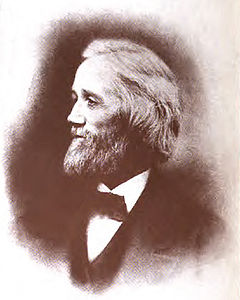Making the Most of Analogies
By Peter LloydIt has happened to me. I know it has happened to you. You’re making a point in a political, philosophical, or personal argument. A brilliant analogy pops into your head and you use it, confident you will make your point. Maybe even sway your ideological opponents. Instead they blow holes all through your analogy. Not because it’s a bad analogy, but because they don’t understand how to use analogies!
A helicopter is like a dragonfly. Dragonfly Innovations recognized the similarities and named their unmanned aerial viewing systems after the ancient insect. I suspect that very few people zoom in on the inconsistencies: Helicopters don’t eat insects. Their wings don’t whirl around over their heads. They don’t carry passengers. Fortunately that kind of thinking doesn’t inhibit creative thinkers.
 Christopher Latham Sholes and his partners, inventors of the first commercially successful typewriter, knew how to use analogies. Using the piano analogy, they came up with a typewriter keyboard arrangement of ebony and ivory keys arranged like this:
Christopher Latham Sholes and his partners, inventors of the first commercially successful typewriter, knew how to use analogies. Using the piano analogy, they came up with a typewriter keyboard arrangement of ebony and ivory keys arranged like this:
As I type, I’m happy they moved beyond a too literal application of the piano analogy and developed the QWERTY keyboard.
How Analogies Work
Successful inventors, innovators, and artists use analogies symbolically rather than literally. They look for models (like the dragonfly) that share the concepts within their challenge (aerial maneuverability). They appply what works for the model to what needs to be solved in the challenge.
A creative inventor like Sholes might have already decided that his yet-to-be-invented writing machine should work by pressing keys, then looked for a key-bearing model to mine for ideas. Or the other way around. With his typewriter challenge in the back of his mind, he may have noticed that presssing the keys of a piano allows a player to produce sequences of information, then bent the piano-operating process to his objective.
I don’t know how or what he thought, but I’m sure he had no trouble looking to a sound-producing machine to solve an image-making challenge. Mixing apples and oranges does not discourage the creative thinker. They have no trouble seeing useful similarities in otherwise unconnected things that others overlook. In Sholes’s case, the exercise struck a chord. Press a key and strike a target. Yeah, that could work!
Literal thinkers—those who get cold feet in the world of concepts—get hung up on the obvious inconsistencies in an analogy. Cognitive dissonance. Pianos make music. We do want to make music, we want to mark paper. Let’s look somewhere else.
When used creatively and constructively, analogies help creative people make giant creative leaps. Try it. What kind of ideas come to your mind when you reverse the piano-typewriter analogy? That is, how might you make a piano keyboard more like a typewriter keyboard?
See also: Dragonflies: Mavericks of Mid-Air by Jenny Marder, PBS Newshour
Peter Lloyd is co-creator with Stephen Grossman of Animal Crackers, the breakthrough problem-solving tool designed to crack your toughest problems.
